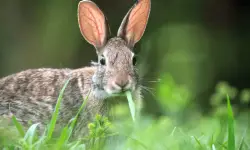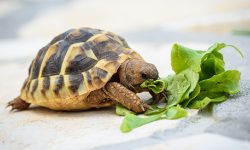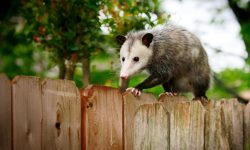Groundhogs—also known as woodchucks—are among the most recognizable creatures in North America. Famous for predicting the length of winter on Groundhog Day, these burrowing rodents play an important role in the ecosystem. But beyond their folklore fame, one question often arises: What do groundhogs eat?
Despite their stout appearance and slow gait, groundhogs are surprisingly active herbivores with a well-balanced diet. They spend much of their day eating and preparing for the colder months. Their feeding habits change throughout the seasons, helping them gain enough weight to survive hibernation.
In this comprehensive guide, we’ll explore 20 foods groundhogs love and depend on to stay strong and healthy. From tender greens and garden crops to fruits and wild plants, we’ll uncover what fuels these underground engineers and keeps them thriving year-round.
Understanding the Groundhog Diet

Groundhogs (Marmota monax) are strict herbivores, meaning they feed exclusively on plant material. Their diet consists of leaves, grass, fruits, vegetables, and occasionally bark or twigs when food becomes scarce.
Groundhogs have sharp incisors that never stop growing, allowing them to chew tough plants and fibrous roots without wearing their teeth down. They eat multiple small meals throughout the day, often foraging early in the morning and late in the afternoon to avoid predators and heat.
Their dietary habits also vary by season. In spring and summer, they consume fresh vegetation to build fat reserves. By autumn, their appetite peaks before hibernation, and during winter, they live off stored body fat inside their burrows.
20 Foods That Keep Groundhogs Thriving
1. Grasses
Grasses form the foundation of a groundhog’s diet. Species such as timothy, bluegrass, and clover grass are particularly popular because they’re soft and rich in fiber.
Groundhogs graze constantly during the growing season, using grass as both food and nesting material. The moisture in young grass also helps them stay hydrated during dry spells.
2. Clover
Clover is a favorite for groundhogs thanks to its high protein and mineral content. They’ll eat both red and white clover found in meadows and backyards.
This nutrient-dense plant supports muscle development and energy storage, especially as groundhogs prepare for hibernation. Clover patches are often hotspots for groundhog activity.
3. Alfalfa
Alfalfa is another protein-rich legume that groundhogs adore. Found in open fields and farmland, it provides essential amino acids and calcium for bone strength.
Farmers often notice burrows near alfalfa fields because it’s one of the groundhog’s most reliable food sources throughout summer.
4. Dandelion Greens
Dandelion greens are highly nutritious and easily accessible. Groundhogs eat the leaves, stems, and even flowers. These greens are loaded with vitamins A and C, calcium, and iron.
In the wild, dandelions grow abundantly, making them a convenient and healthy choice for foraging groundhogs.
5. Plantain Leaves
Plantain, a common broadleaf weed, is another preferred food. Its soft texture and high water content make it ideal for hydration during dry seasons.
The leaves contain minerals and mild medicinal properties that may benefit digestion—one reason groundhogs are frequently seen munching them in fields and gardens.
6. Lettuce
Groundhogs find lettuce irresistible. Its tender leaves, especially romaine and butterhead varieties, are easy to chew and digest.
Gardeners often notice missing lettuce heads, as groundhogs are known to raid vegetable patches for these refreshing greens. Lettuce provides hydration and mild fiber.
7. Cabbage
Cabbage is a common target for hungry groundhogs. The dense, leafy structure offers both fiber and energy, while its mild flavor makes it easy to consume.
However, groundhogs prefer young, soft leaves over mature ones. They often nibble through cabbage plants quickly, leaving visible bite marks.
8. Beans and Peas
Groundhogs love legumes like green beans, soybeans, and peas. These vegetables are rich in protein and carbohydrates, helping them build fat before hibernation.
They’ll eat both the pods and leaves, often pulling entire plants down for convenience. In farmland, these crops attract groundhogs throughout the growing season.
9. Carrots
Carrots are a sweet treat for groundhogs. They enjoy both the leafy tops and the roots, which provide sugar, fiber, and beta-carotene.
Although wild groundhogs don’t find carrots naturally, they quickly adapt to cultivated gardens. Their sharp incisors make it easy to gnaw through soil and reach buried roots.
10. Apples
Apples are one of the groundhog’s favorite fruits. Their natural sugars give a quick energy boost, while the water content aids hydration.
Groundhogs often eat fallen apples from orchards or nearby trees, and they may climb low branches to reach them. The sweet aroma of ripening fruit attracts them easily.
11. Berries
Berries such as blackberries, strawberries, and raspberries are seasonal favorites. These small fruits are rich in vitamins and antioxidants that support immune health.
Groundhogs forage berry patches during summer, consuming both ripe fruits and leaves. Their foraging helps spread seeds, contributing to ecosystem regeneration.
12. Corn
Cornfields are frequent feeding grounds for groundhogs. They eat young shoots and ripened kernels, which are high in carbohydrates and energy.
Corn helps groundhogs accumulate fat reserves for hibernation, but it also brings them into conflict with farmers who find them nibbling through crops.
13. Squash and Pumpkins
Groundhogs enjoy soft-fleshed vegetables like squash, zucchini, and pumpkins. These plants are water-rich and packed with nutrients.
In fall, when pumpkins ripen, groundhogs take advantage of the abundance. They’ll eat both the skin and flesh, leaving distinct bite marks behind.
14. Clover Flowers and Blossoms
In addition to leaves, groundhogs consume the blossoms of clover and other flowering plants. These are rich in nectar and provide small amounts of natural sugars.
Flower consumption also introduces pollens and trace minerals, supporting digestive health and immune function.
15. Weeds and Wild Herbs
Weeds such as chickweed, wild lettuce, and lamb’s quarters are important wild foods for groundhogs. These plants grow freely in open spaces and provide diverse nutrients.
Groundhogs act as natural weed controllers, keeping plant populations balanced in their environment.
16. Tree Bark and Twigs
In winter, when fresh vegetation disappears, groundhogs resort to chewing on bark, twigs, and woody stems. Species like maple, apple, and birch are common choices.
Although low in nutrients, bark provides fiber and keeps their teeth worn down while offering a survival food source during scarcity.
17. Roots and Tubers
Groundhogs dig for roots, bulbs, and tubers during late autumn and early spring. These underground parts store nutrients and moisture, helping them endure dry periods.
Plants like wild onions, yams, and turnips offer carbohydrates and vitamins that sustain their energy levels.
18. Spinach and Kale
Groundhogs readily eat garden greens like spinach and kale. These leafy vegetables are high in calcium and iron, supporting bone and muscle health.
Because they’re tender and nutrient-dense, these plants are irresistible to groundhogs, often disappearing overnight from gardens.
19. Fruits from Wild Trees
Wild fruits such as mulberries, cherries, and persimmons provide seasonal nourishment. They offer sugars and hydration that help groundhogs build fat reserves.
Groundhogs often forage near forest edges where wild fruit trees grow naturally, climbing short branches or feeding on fallen fruits.
20. Clover-Rich Hay and Forage Crops
When living near farms, groundhogs feed on clover-rich hay or forage crops left in the fields. These dense, dried plants remain accessible even in cooler months, offering vital roughage.
Hay not only fills their diet but also provides nesting material for burrow insulation during hibernation.
Seasonal Diet Patterns
Groundhogs’ eating habits shift with the seasons, aligning perfectly with nature’s cycles:
Spring – Fresh Growth
After hibernation, groundhogs emerge hungry and weak. They focus on tender grasses, young leaves, and clover shoots that are rich in protein and moisture. This spring diet rebuilds muscle and restores energy.
Summer – Abundance
By summer, their diet expands to include vegetables, fruits, and wildflowers. They eat constantly to gain weight for the coming hibernation season. Gardens and farmlands become favorite feeding spots.
Autumn – Preparation
As temperatures drop, groundhogs switch to calorie-dense foods like corn, apples, and roots. Their fat reserves increase rapidly, enabling them to endure long months underground.
Winter – Dormancy
During hibernation, groundhogs rarely eat. Their metabolism slows dramatically, allowing them to survive off stored body fat. When they awaken in spring, their feeding frenzy begins again.
Nutritional Needs of Groundhogs
Groundhogs require a balanced intake of nutrients to thrive:
- Fiber: From grasses and leaves, essential for digestion.
- Carbohydrates: From fruits, corn, and roots, providing energy for daily activities.
- Protein: Found in legumes like alfalfa and clover, vital for muscle and tissue growth.
- Vitamins and Minerals: Supplied by greens, berries, and herbs for strong immunity.
- Water: Sourced mostly from plant moisture, though they also drink from streams or puddles.
This combination supports their growth, fur health, reproductive success, and survival during hibernation.
How Groundhogs Forage
Groundhogs are solitary foragers, relying on their sharp sense of smell to detect food. They usually stay within 100–200 feet of their burrow, venturing out during cool morning or evening hours.
Their diet choices are guided by availability rather than preference, although they instinctively seek out nutrient-rich foods. Groundhogs use their sharp claws to dig for roots or climb short shrubs for fruits and leaves.
Interestingly, they sometimes carry food back to their burrows to eat in safety—especially during times of high predator activity.
Groundhogs and Gardens
While groundhogs are essential to ecosystems, their love for cultivated plants often causes tension with gardeners and farmers. They can quickly decimate vegetable patches, eating lettuce, beans, and carrots within hours.
To protect gardens:
- Use fencing buried at least 12 inches deep to block burrow entry.
- Apply natural repellents such as garlic, cayenne pepper, or predator urine.
- Grow deer-resistant plants like lavender, sage, or daffodils around the garden’s edge.
Coexistence is possible by creating boundaries that discourage intrusion while respecting their ecological role.
The Ecological Role of Groundhogs
Groundhogs contribute significantly to their habitats. Their burrowing activity aerates soil, improving nutrient distribution and water flow. Old burrows also become homes for other species like rabbits, snakes, and foxes.
By feeding on vegetation, groundhogs help maintain plant balance, preventing overgrowth of certain species. Their waste further enriches soil fertility, promoting healthy ecosystems.
Though often misunderstood as pests, they are key ecological engineers supporting biodiversity in meadows, forests, and farmland edges.
FAQs About Groundhog Diets
What do groundhogs eat the most?
Grasses, clover, and leafy greens make up most of their diet. In summer, they also enjoy fruits and vegetables.
Do groundhogs eat meat?
No. Groundhogs are herbivores and do not eat meat or insects.
What do groundhogs eat in winter?
They hibernate during winter and rely on stored body fat instead of eating.
Are groundhogs bad for gardens?
They can cause damage by eating vegetables and digging burrows, but deterrents and fencing can minimize impact.
Do groundhogs drink water?
Yes, though they get most of their moisture from plants, they also drink from streams, puddles, and dew.
How much do groundhogs eat each day?
Groundhogs can eat about one-third of their body weight daily during the active seasons, preparing for hibernation.
Conclusion
Groundhogs are much more than the sleepy animals we see on Groundhog Day—they’re hardworking herbivores with diverse and fascinating diets. From tender clover and wild berries to corn and roots, every bite contributes to their strength, growth, and survival through harsh winters.
Their ability to adapt to changing seasons and environments is a testament to nature’s design. While they sometimes frustrate gardeners, groundhogs play an important role in maintaining healthy ecosystems. By aerating soil and managing plant growth, they help sustain the balance of the natural world.
So the next time you see a groundhog nibbling on clover or peeking from its burrow, remember—it’s not just eating; it’s thriving. Every mouthful is part of a cycle that connects wildlife, land, and life itself. Understanding what groundhogs eat helps us appreciate their quiet but essential contribution to the wild landscapes we share.






